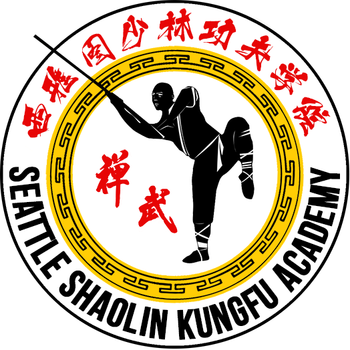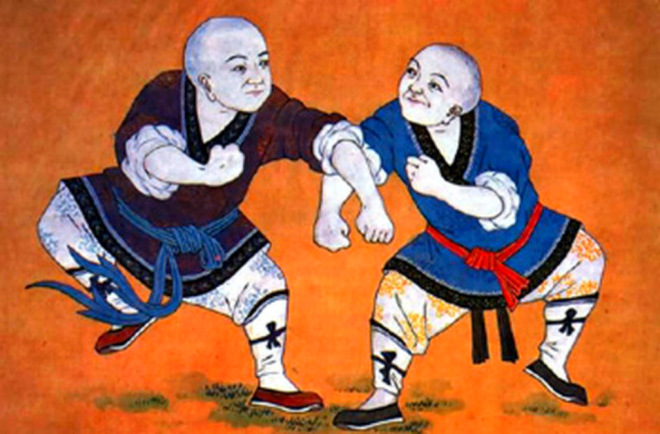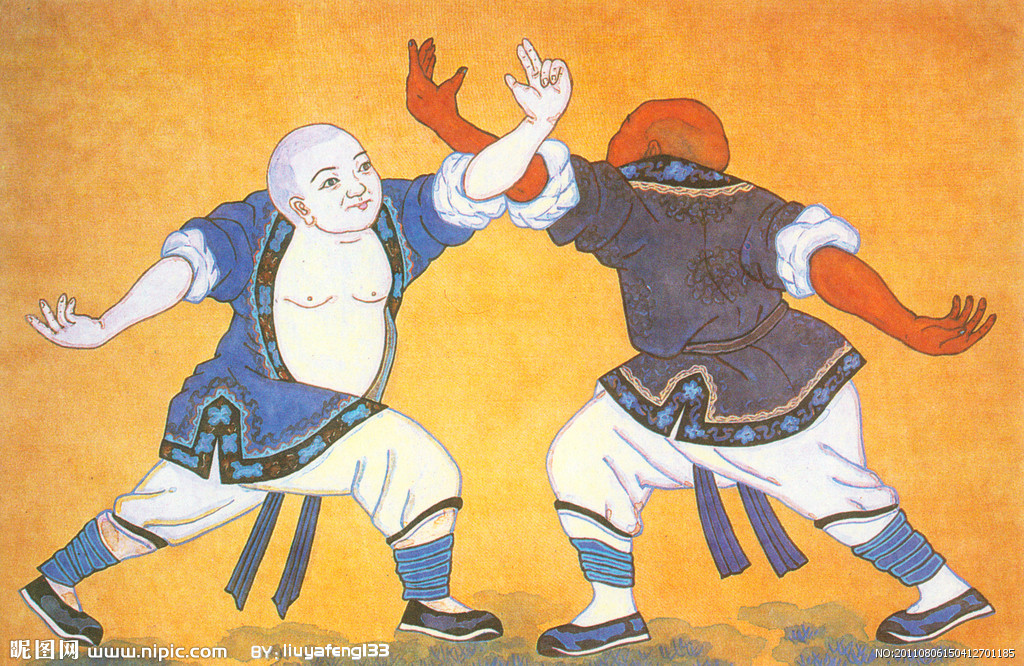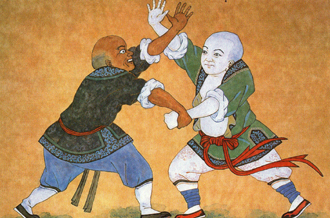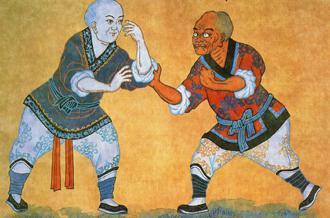More than 1500 years old tradition of Shaolin Kungfu refers to the traditional cultural system of mental and physical training, developed by Shaolin Temple of Songshan Mountain.
Shaolin practices are designed to unleash the supernatural powers locked inside each human being, and fully reflects the wisdom of Chan Buddhism. The martial arts practiced by monks in the Shaolin Temple are its major form of expression.
Shaolin Kungfu System
Shaolin Kungfu encompasses complete technical and theoretical system, with martial arts and techniques as its major form of expression, and Buddhism belief and Chan wisdom as the cultural connotation.
Shaolin Kungfu is a huge and well-developed technical system as opposed to the many "schools" or "Quan styles" of other martial arts. Chinese martial arts are complicated in structure and abundant in school. According to historical records, Shaolin Kungfu is the one school among a myriad of Chinese martial arts schools, which boasts a long history, a complete system and the highest level of skills. Those Quan guidebooks handed down over many generations in Shaolin Temple show that there are as many as several hundred series of Shaolin Kungfu skills of which several dozen are widely known and practiced. There are 72 unique sets of skills and all kinds of special bodies of Kungfu techniques such as Qi Gong, grappling, wrestling, disjointing, attacking a vital point of the body etc. This wide body of skills and knowledge constitutes a huge and orderly technical system organized according to special categories and levels of difficulty.
← Shaolin Monks ar from the Qin Dynasty
Picture of Bodhidharma at Himeji Castle
Essence of Shaolin Kungfu
Shaolin Kungfu is presented with the movement of the human body such as attack, defense and wrestling as its core and the series as its basic units. Series are made up of a group of movements. The design and arrangements of these movements are based on the medical knowledge of ancient China and conforms to the rule of movement of the human body. Movements and series put special emphasis on the combination of movement and stillness, the balance between Yin and Yang, the complement of toughness and softness, and the inclusion of the spirit and the form. The most well-known principle is "Six Harmonies", composed of the three external harmonies (shoulders and hip, elbows and knees, hands and feet) and the three external harmonies (mind and intention, intention and Qi, Qi and force). The ancient Chinese belief in "the unity of human and nature" suggests that only those movements that fit the natural structure of the human body can be called proper. Shaolin Kungfu has long been tested by history, during which it has kept its Chan Buddhist essence while weeding out from itself what was undesirable while continually undergoing change and self-reformation. As a result, Shaolin Kungfu gives full play to the potential of the human body and has achieved an optimal form of movement for the human body which allows room for its practitioners to develop and thrive.
Way of Practice
Shaolin Kung Fu is taught and practiced mainly by oral and physical instructions and diligent drills, using memorable formula as an aide. To attain a higher Kungfu level is almost entirely dependent on the master's instruction and practitioners' insight. In addition, daily Chan practices can maintain the progressive improvement in Kungfu skills. Chan School focuses on practicing in real life so as to achieve the goal of Buddhism. As part of the daily life of the monks, Shaolin Kungfu has been incorporated in the process of practicing Chan. Generally speaking, the course of practicing Shaolin Kungfu follows nine stages:
Master Zhou with his Shaolin Brothers at the 6 years anniversary of SSKA 2017
acquainting oneself with Shaolin temple and Kungfu;
admiring the spirit and ideal of Shaolin Kungfu;
making determination, and setting the goal of studying Shaolin Kungfu;
having obsession with Kungfu and rest assured that the goal would be achieved;
putting one's determination into diligent practice;
comprehending the whole Kungfu system and its cultural content;
transforming the knowledge of Kungfu into Chan belief by incorporating Kungfu practice with Chan cultivation; in this stage, practitioner will integrate the application of Kungfu as one Dharma gate into Chan School;
focusing on spiritual development; in this stage, based on one's Chan belief, Kungfu practice has become an effective approach of cultivating Buddhism, rather than an aim;
gaining an insight into human nature and contemplating the essence of Buddhism.
Master Zhou with High Fly Staff at Gold Gate Bridge, San Francisco
